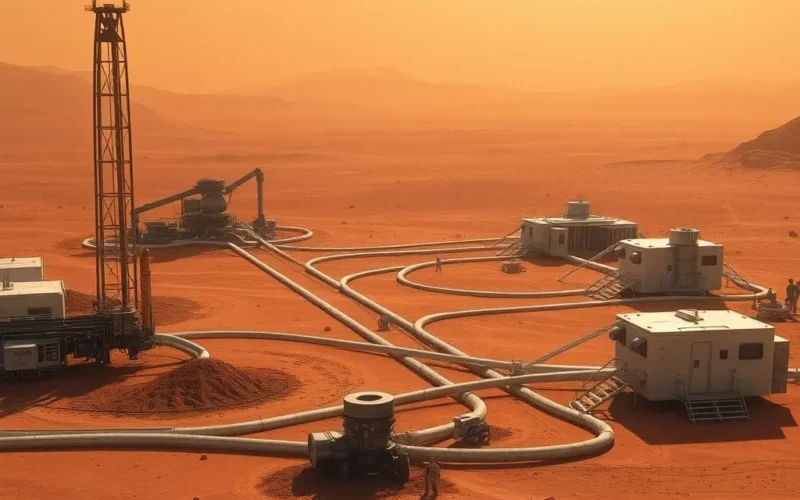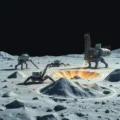Have you ever paused to really consider what it would take for humans to establish a lasting presence beyond our home planet? We’re not talking about brief flags-and-footprints visits, but actual settlements, places where people live and work for extended periods. The challenge isn’t just getting there; it’s staying there. Hauling every single necessity – water, oxygen, fuel, building materials – from Earth is prohibitively expensive and logistically nightmarish.
Enter a revolutionary concept that’s not just science fiction but the bedrock of future space endeavors: In-Situ Resource Utilization (ISRU). The term itself sounds technical, but the idea is beautifully simple and profoundly necessary: use the resources already present at your destination.
Whether it’s the dusty surface of the Moon or the rusty plains of Mars, these celestial bodies aren’t entirely barren. They hold secrets locked within their soil, rocks, and perhaps even thin atmospheres – resources that, if unlocked, could turn potential death traps into sustainable outposts.
Speaking of unlocking potential, sometimes a quick visual explanation does wonders. Check out this short rundown on what ISRU is all about:
Table of Contents
Why ISRU Isn’t Just Nice to Have, It’s Essential
Imagine trying to build a house but having to ship every brick, every nail, every plank from the other side of the world, paying millions per pound. That’s the current reality of launching anything from Earth into space. A liter of water, a cubic meter of oxygen, or a kilogram of fuel launched from Earth comes at an astronomical cost.
ISRU flips this paradigm. Instead of bringing everything, you become self-sufficient. You mine local ice for water to drink and produce oxygen to breathe. You process the atmosphere (on Mars) or surface materials (on the Moon) to create rocket fuel for return trips or further exploration. You use the very ground you stand on to build protective habitats.
This isn’t just about saving money (though that’s a huge factor); it’s about enabling permanence, expanding reach, and creating resilience. A base reliant solely on Earth resupply is vulnerable. A base that can sustain itself locally is empowered.
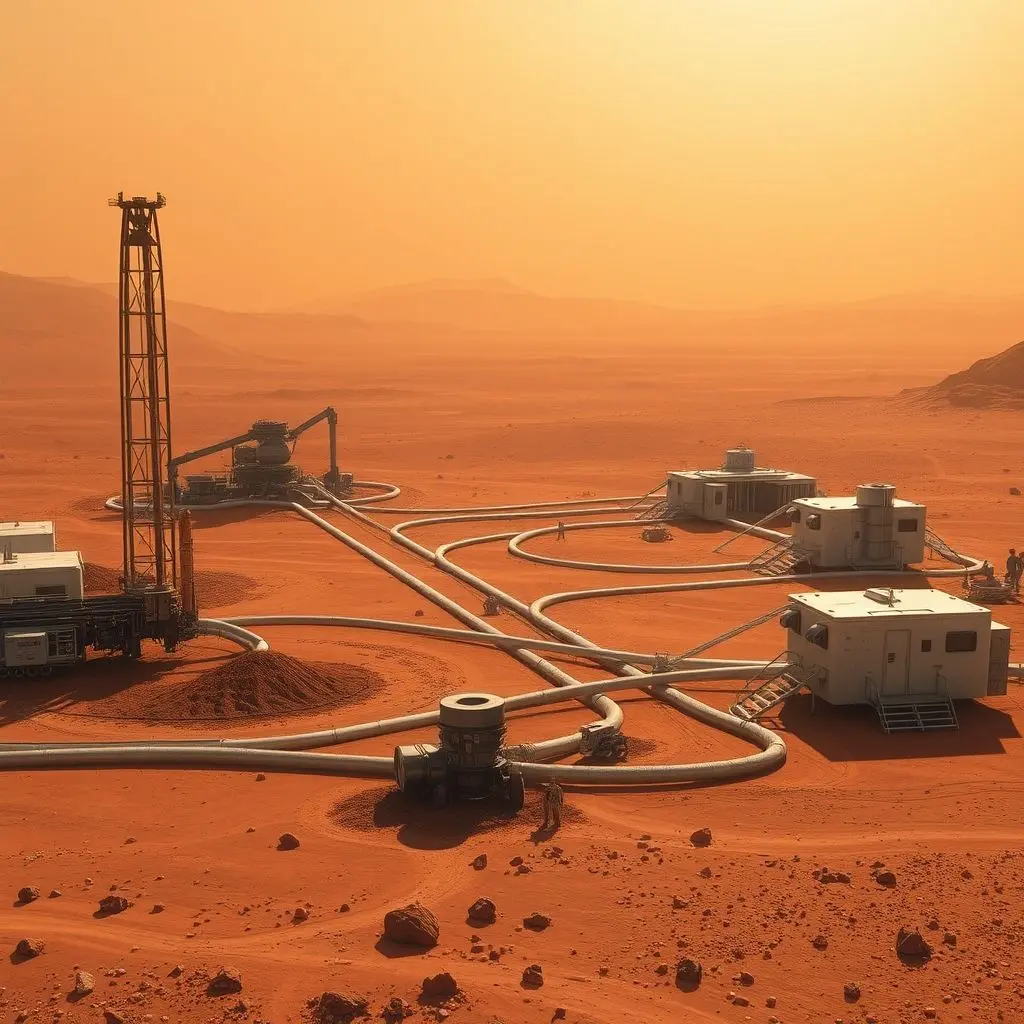
ISRU in Action: Unlocking Lunar and Martian Resources
While the Moon and Mars present different environments and resource profiles, the core principle of ISRU applies to both.
Harvesting Water Ice
Water is the
- Lunar Water Ice: Evidence from missions like Lunar Prospector, LCROSS, and Chandrayaan indicates significant quantities of water ice exist in permanently shadowed regions (PSRs) near the Moon’s poles. The low temperatures in these craters trap volatile compounds like water ice. Future missions plan to send rovers or landers specifically to these regions to drill into the regolith and extract this ice, likely by heating it and collecting the vapor.
- Martian Water Ice: Mars also has substantial water ice, found in its polar ice caps and buried beneath the surface regolith at many latitudes. Shallow subsurface ice is accessible with relatively simple digging or drilling. This ice can be melted or sublimated and processed similarly to lunar ice.
Extracting water ice is often considered the
Producing Breathable Oxygen
While plants can eventually provide oxygen, early bases need a reliable, high-volume source of O2.
- Lunar Oxygen: The lunar surface regolith is rich in oxygen, but it’s bound up in minerals like oxides (e.g., ilmenite – FeTiO3). Extracting this oxygen requires energy-intensive processes like molten salt electrolysis or carbothermal reduction. While more complex than water extraction, this offers a vast potential supply of oxygen from widely available material.
- Martian Oxygen: The Martian atmosphere is 95% carbon dioxide (CO2). Instruments like MOXIE (Mars Oxygen In-Situ Resource Utilization Experiment) on the Perseverance rover demonstrate a process called solid oxide electrolysis, which splits CO2 into oxygen and carbon monoxide (CO). This is a direct way to produce oxygen from the Martian air, proven on the surface today.
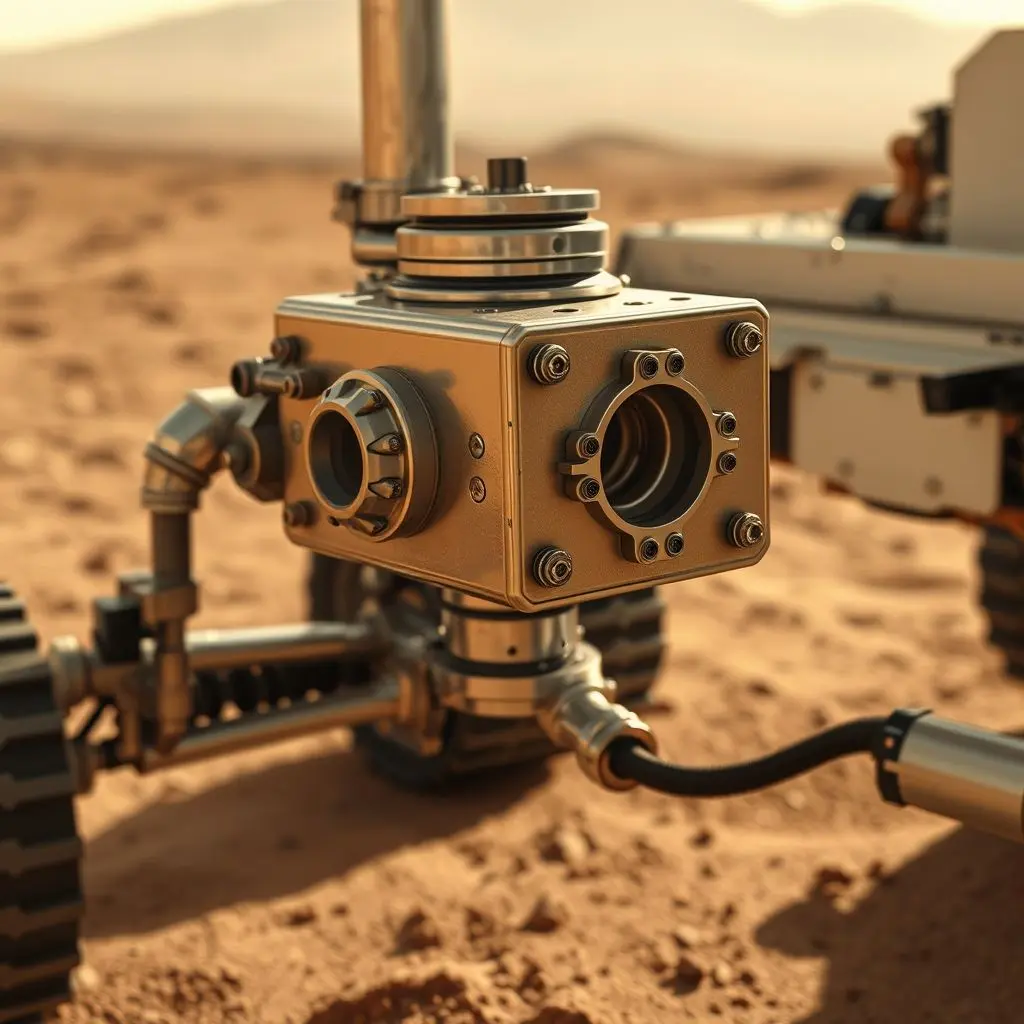
Generating Rocket Fuel
Rocket fuel is essential for ascent, descent, and transfers. Producing it locally dramatically reduces the mass that needs to be launched from Earth, potentially enabling more ambitious missions or making return trips feasible.
- Lunar Fuel: Using extracted lunar water, electrolysis splits H2O into hydrogen (H2) and oxygen (O2). Liquid hydrogen and liquid oxygen (LH2/LOX) is a powerful rocket propellant combination, used by many Earth-based rockets. Producing it on the Moon could fuel lunar hoppers or even missions departing from the Moon for Mars.
- Martian Fuel: Mars offers exciting possibilities for propellant production. The Sabatier reaction combines hydrogen (potentially brought from Earth initially or extracted from Martian water ice) with atmospheric CO2 to produce methane (CH4) and water. The water can then be electrolyzed to produce more oxygen and hydrogen. Methane and oxygen (CH4/LOX) is another effective propellant combination, used by rockets like SpaceX’s Starship. This process leverages both atmospheric gas and water ice, making Mars a potential gas station for the solar system.
Utilizing Regolith for Construction
The loose surface material, or regolith, found on both the Moon and Mars isn’t just dirt; it’s a potential building block. Transporting traditional building materials like concrete or steel is impractical. Instead, ISRU proposes using regolith itself.
- Regolith can be used as shielding against radiation and micrometeoroids simply by piling it up or burying habitats.
- Processes like 3D printing, sintering (heating regolith particles until they fuse), or binding with minimal additives are being developed to create structures, landing pads, roads, or even components and spare parts directly from the local soil.
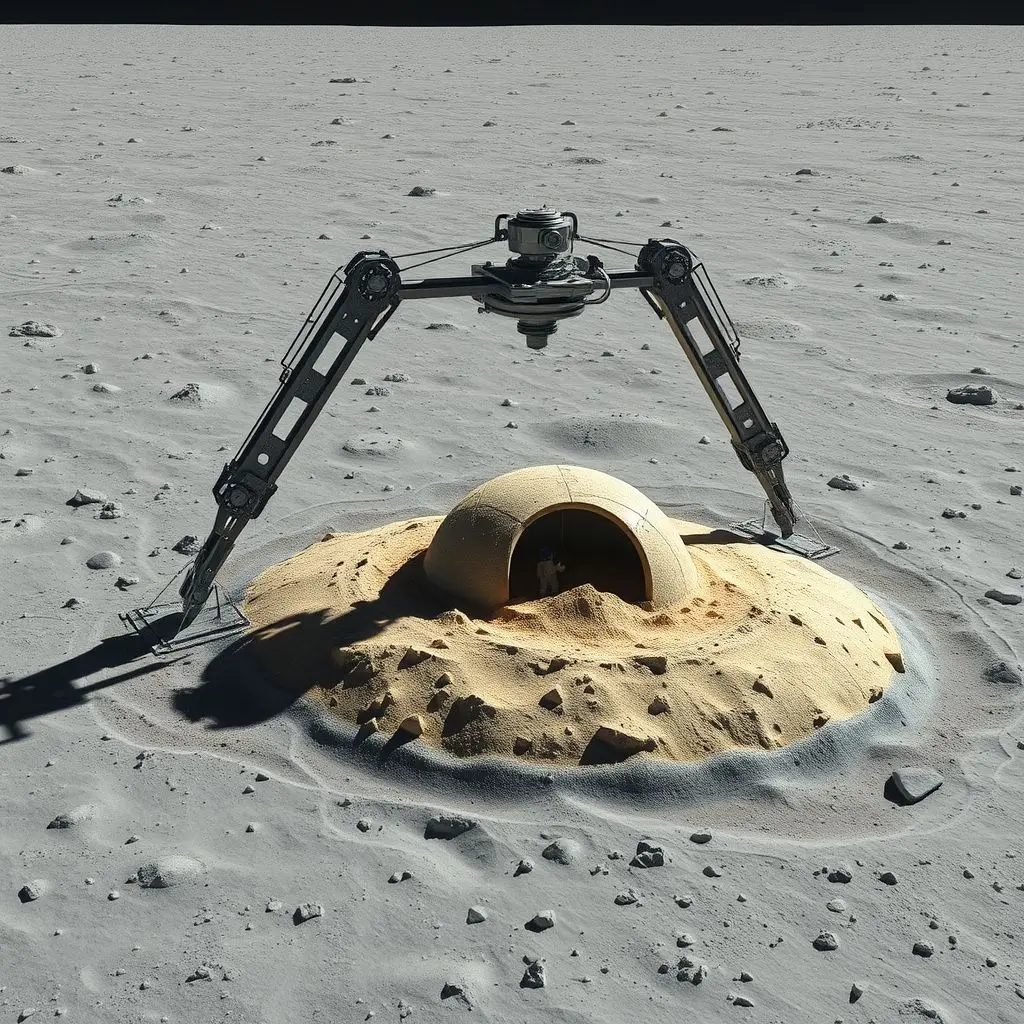
Challenges on the Path to Cosmic Self-Sufficiency
Implementing ISRU is far from trivial. It requires:
- Reliable Technology: Systems must operate autonomously in harsh environments (radiation, extreme temperatures, vacuum/thin atmosphere, dust) for extended periods without maintenance.
- Energy: ISRU processes are often energy-intensive. Access to reliable power sources (like nuclear fission or large solar arrays) is crucial.
- Dust Mitigation: Lunar and Martian dust is abrasive, clingy, and can damage equipment.
- Scaling Up: Demonstrating a process in a lab or on a small scale (like MOXIE) is different from building infrastructure capable of supporting a large crew or fueling multiple rockets.
The Transformative Impact of ISRU
Successfully implementing ISRU technologies will fundamentally change our ability to explore and inhabit space. It promises:
- Reduced Cost: Mass launched from Earth is drastically reduced.
- Increased Sustainability: Bases become less reliant on a fragile supply chain stretching across millions of miles.
- Enhanced Capabilities: Locally produced fuel enables more frequent and further-reaching missions.
- Greater Resilience: Ability to repair, build, and produce resources on-site makes operations more robust.
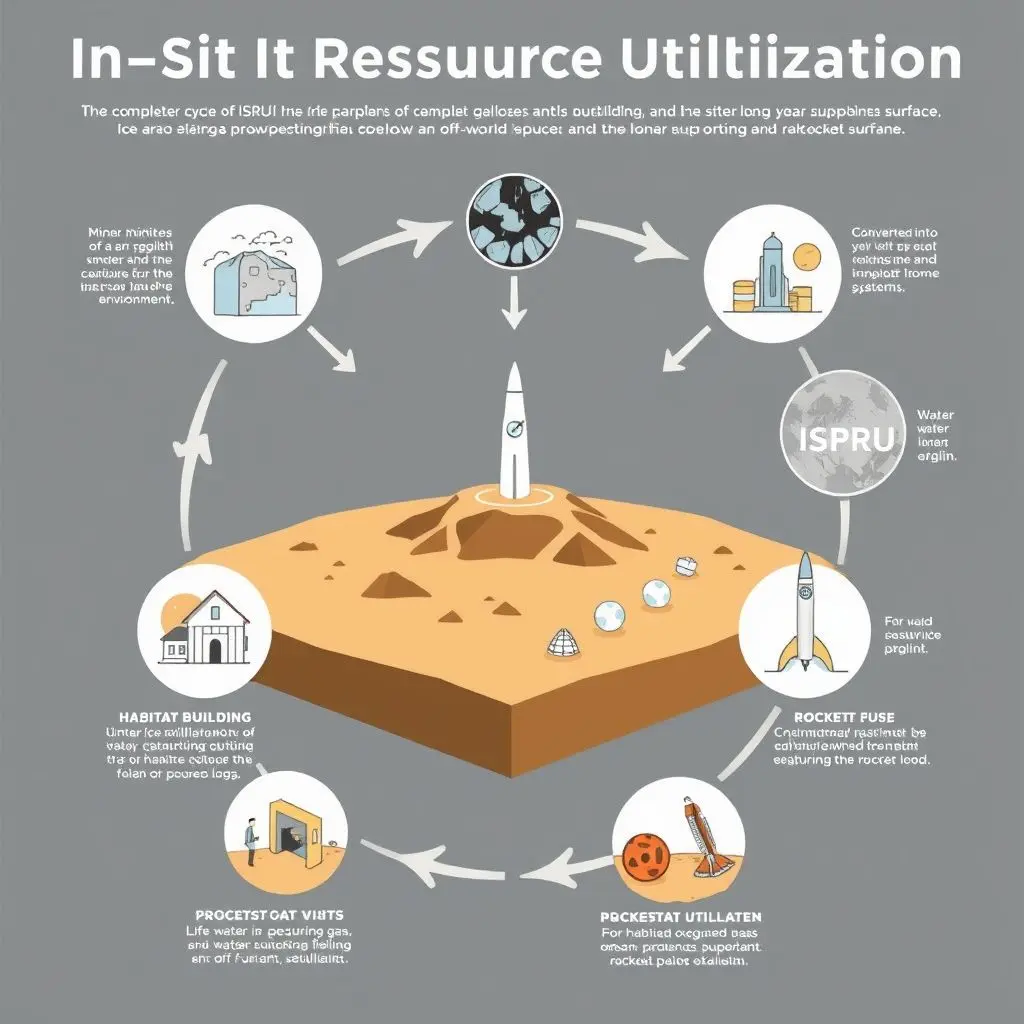
FAQ: Your ISRU Questions Answered
Q: Is ISRU happening right now?
A: Yes! Instruments like MOXIE on Mars are actively demonstrating oxygen production from the atmosphere. While full-scale resource utilization for human bases is still in development, the foundational technologies are being tested and refined today.
Q: Which resource is the most important for ISRU?
A: Many experts would argue for water ice. Water can be used directly for life support and agriculture, and it’s a source of hydrogen and oxygen, which are key components for breathable air and rocket fuel. Access to water unlocks multiple other resource streams.
Q: Can ISRU provide food?
A: Indirectly, yes. ISRU provides water and potentially oxygen and power needed for controlled environment agriculture (like growing plants in a habitat). While ISRU doesn’t directly create edible biomass, it provides the resources necessary to support food production systems off-world.
Q: What about energy for ISRU?
A: ISRU processes are energy-intensive. Solar power is an option, especially with efficient storage, but nuclear fission power systems are also being developed for reliable, high-output energy generation needed for continuous ISRU operations, particularly in areas with limited sunlight (like lunar polar craters or during Martian dust storms).
Charting a Course for the Stars
The journey to becoming a multi-planetary species, or even just establishing enduring outposts beyond Earth, hinges on mastering the art of living off the land. In-Situ Resource Utilization isn’t just a niche scientific pursuit; it’s the practical engineering pathway to sustainability, autonomy, and expansion into the cosmos. It’s about transforming the seemingly barren into the bountiful, turning potential limitations into the very building blocks of our future in space. As we continue to explore the Moon and Mars, the advancements made in ISRU will be the quiet, crucial triumphs that pave the way for humanity’s next giant leaps.
